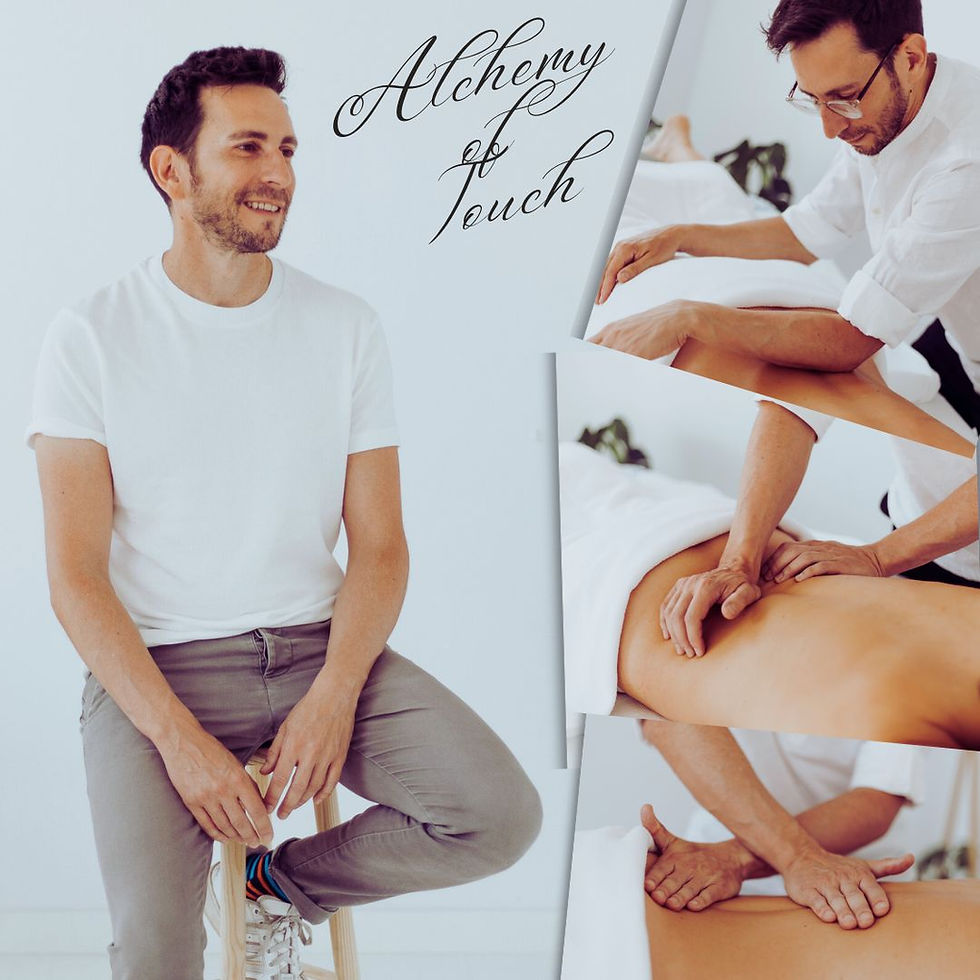How posture can affect your jaw, Introducing the stomagnathic system.
- Waterloo Body Station

- Oct 22, 2019
- 3 min read
Updated: Nov 21, 2019
Hello from Trevor England. He has written this article and hopes it will help you understand your jaw. He works at Waterloo Body station on Tuesdays from 3pm until 7pm. You can call the clinic on 02072029000 to book a treatment with him.
the article
The stomagnathic system (ss) is extremely complex system comprising of bones, muscles, nerves and soft tissues which are involved in the process of mastication, swallowing and speech. In a search of literature several authors have discussedthe inclusion of the cervical spine in this relationship, naming this the craniomandibular system (cms). As a unit studies have highlighted possible relationship with this system and overall posture and motor performance (Hellmann, et al., 2015; Fujino, Takahashi and Ueno, 2010; Patti, et al., 2016).
Hellman, et al., (2015) discussed that posture is not a static state, rather a dynamic process of counterbalancing extrinsic and intrinsic forces, sensory information, coordination of joints and synergy of muscular activity. They concluded that biting can impact upon posture control through modulating proprioceptors in the neck. Further studies by Fujino, et al., (2010) and Patti, et al., (2016), concluded that the interaction of skeletal muscles with the ss, they highlighted that voluntary teeth clenching can impact on posture and physical performance.
A study by Beatrice, Guiseppe and Luca, (2016) highlighted that due to the lack of evidence asymmetry in the stomatognathic system without the presence of Temporomandibular disorders (tmd) does correlate to body postural imbalances. They conclude that more in depth studies are required before being able to make a conclusive judgement.
Tmd, of which only 5% of the population seek clinical intervention, can have an impact on the ss and cms. Rakesh, et al., (2014), explored how TMD or craniomandibular disorders have a greater tendency of developing alterations in craniocervical posture. If left untreated tmd carry a risk of developing further postural adaptations which may manifest in pain presenting in the shoulder and/or upper extremity, something clinicians need to be aware of when reflecting upon patient’s presenting symptoms (Cucci and Caradonna, 2009).
Trevor England
Registered Osteopath
Complementary Therapist and Tutor
Certified STOTT PILATES trainer
References
Starecta., undated. 19) Relationship between the Stomatognathic System, Muscles of the Neck and the Rest of the Body. [online] Available at <http://starecta.com/19-relationship-stomatognathic-system-muscles-neck-rest-body/> [Accessed 16 January 2018].
Cuccia. A., Caradonna. C., 2009. The Relationship Between the Stomatognathic System and Body Posture. Clinics (San Paulo). [e-journal] 64(1) 61-66. Available at <https://www.ncbi.nlm.nih.gov/pmc/articles/PMC2671973/. [Accessed 16 January 2018]
Beatrice. D.B., Giuseppe. P., Luca. C., 2016. Does asymmetry in the stomatognathic system correlate with body posture impairments? A systematic review. South East Journal of Orthodontics and Dentofacial Research. [e-journal] 3(2) 44-51. Available from Anglia Ruskin University website <https://doaj.org/article/2f44e6b350bf4b45980f29adde8f34ab> [Accessed 16 January 2018].
Fujino. S., Takahashi. T.,Ueno. T., 2010. Influence of voluntary teeth clenching on the stabilization of postural stance disturbed by electrical stimulation of unilateral lower limb. Gait & Posture. [e-journal] 31(1) 122-125. Available from Anglia Ruskin University website <http://www.gaitposture.com/article/S0966-6362(09)00624-9/fulltext> [Accessed 16 January 2018].
National Institute for Health and Care Excellence. 2016. Temporomandibular disorders. [online] (updated 2016) Available at <https://cks.nice.org.uk/temporomandibular-disorders-tmds#!backgroundsub:1> [Accessed 16 January 2018].
Patti. A., Bianco. A., Messina. G., Paoli. A., Bellafiore. M., Battaglia., Iovane. A., Traina. M., Palma. A., 2016. The influence of the stomatognathic system on explosive strength: a pilot study. The journal of Physical Therapy Science. [e-journal] 28(1) 72-75. Available at <https://www.ncbi.nlm.nih.gov/pmc/articles/PMC4755977/> [Accessed 13th January 2018].
Rakesh. N., Yashoda Devi. B. K., Patil. D.J., Nagi. R., 2014. Assessment of cervical spine postural disorders in patients with temporomandibular dysfunction: a radiographic evaluation. Oral Radiology. [e-journal] 30(1) 38-44. Available from Anglia Ruskin University website <https://search.proquest.com/docview/1471958744?accountid=8318&rfr_id=info%3Axri%2Fsid%3Aprimo> [Accessed 15 January 2018].O
















Comments